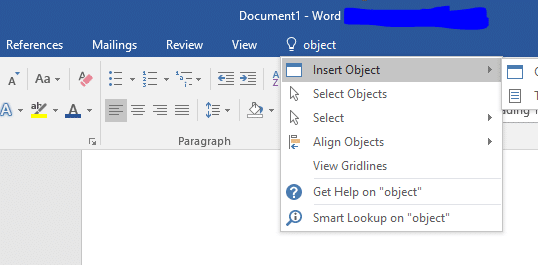

Since this uses a formula, you can use it even when you have hundreds or thousands of cells. This method is suited when you want the checkmark insertion to be dependent on cell values. If you want to remove the formula and only keep the values, copy the cell and paste it as value (right-click and choose the Paste Special and then click on Paste and Values icon).

This helps you make your reports a little more visual. Remember, you need to convert the column font to Wingdings. You can use the below IF formula to get a checkmark if the sale value is more than 5000 and a cross mark if it’s less than 5000. The real benefit of using a formula is when you use it with other formulas and return the checkmark or the cross mark as the result.įor example, suppose you have a dataset as shown below:
#HOWTO INSERT CHECK MARK IN WORD CODE#
You can use similar CHAR formulas (with different code numbers) to get another format of the checkmark or the cross mark. =CHAR(252)įor this to work, you need to convert the font to Wingdingsīecause when you use the CHAR(252) formula, it would give you the ANSI character (ü), and then when you change the font to Wingdings, it is converted to a checkmark. The below formula would return a checkmark symbol in the cell. You can use the CHAR function to return a checkmark (or a cross mark). Once you have used it to insert the symbol, you can reuse that one by copy-pasting it. This method is a bit longer but doesn’t require you to know any shortcut or CHAR code.

This also means that you can have text/number along with the checkmark in the same cell. The shape and size may adjust a little based on the font. Note that using ‘Segoe UI Symbol’ allows you to use the checkmark in any regularly used font in Excel (such as Arial, Time Now, Calibri, or Verdana). If you want more, simply copy the already inserted one and use it. The above steps would insert one checkmark in the selected cell.

The method you use would be dependent on how you want to use the checkmark in your work (as you’ll see later in this tutorial). In this article, I will show you all the methods I know. In this article, I will only be covering checkmarks. Also, you can select a checkbox and drag it anywhere in the worksheet (as it’s not bound to the cell).Ī checkmark is a symbol in the cell and a checkbox (which is literally in a box) is an object that is placed above the cells. This means that if you delete the cell, the checkbox may not get deleted. So when you place a checkbox above a cell, it’s not a part of the cell but is an object that is over it. Just like regular text, you can format it by changing the color and font size.Ī checkbox, on the other hand, is an object that sits above the worksheet. This means that when you copy the cell, you also copy the checkmark and when you delete the cell, you also delete the checkmark. While a checkmark and a checkbox may look somewhat similar, these two are very different in the way it can be inserted and used in Excel.Ī checkmark is a symbol that you can insert in a cell (just like any text that you type).


 0 kommentar(er)
0 kommentar(er)
